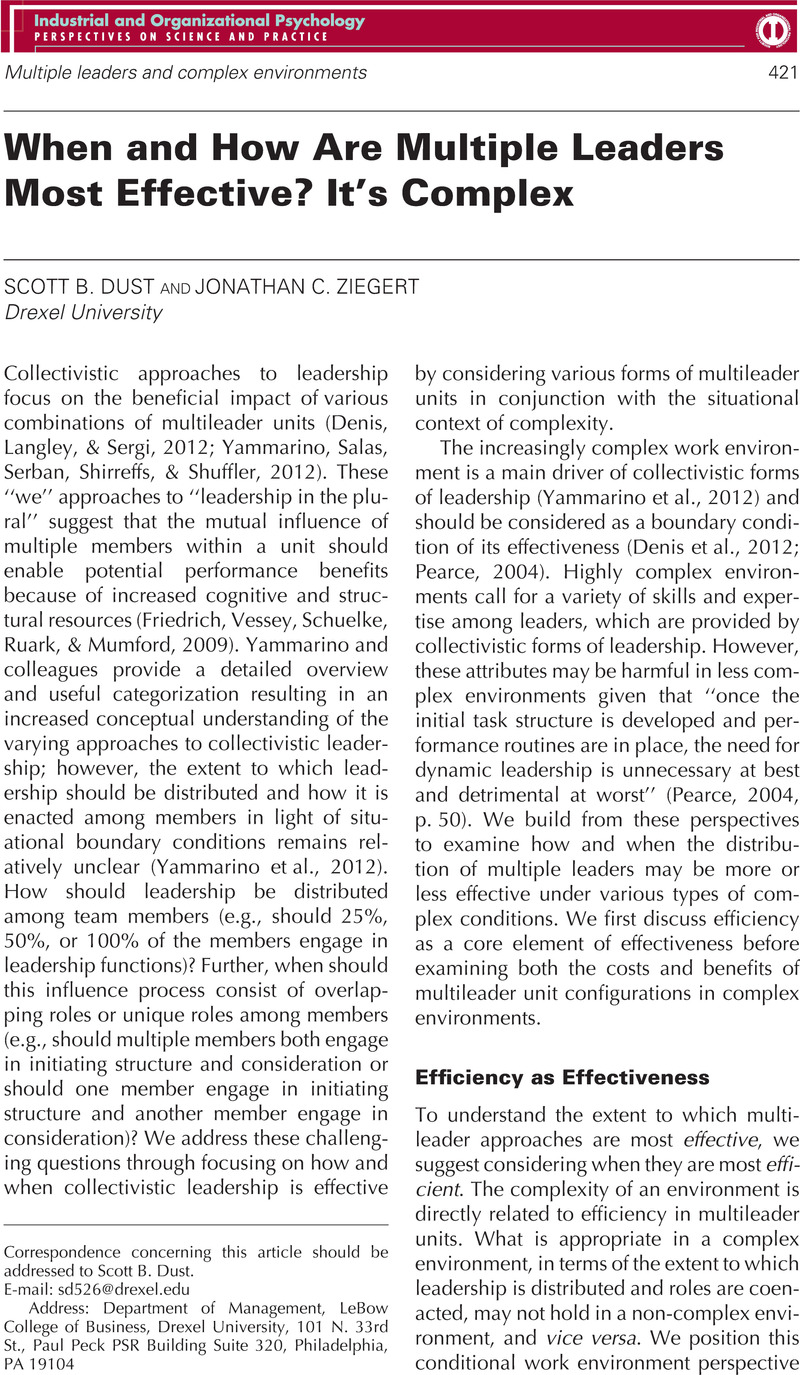Crossref Citations
This article has been cited by the following publications. This list is generated based on data provided by Crossref.
Shuffler, Marissa L.
Salas, Eduardo
Yammarino, Francis J.
Serban, Andra
and
Shirreffs, Kristie
2012.
Putting the “We” in Leadership: Continuing the Dialogue to Advance Our Science and Practice.
Industrial and Organizational Psychology,
Vol. 5,
Issue. 4,
p.
437.
MacPhee, Maura
Chang, Li-Lu
Havaei, Farinaz
and
Chou, Wen-Shan
2014.
A Descriptive Account of an Inter-Professional Collaborative Leadership Project.
Administrative Sciences,
Vol. 4,
Issue. 3,
p.
373.
Resick, Christian J.
Murase, Toshio
Randall, Kenneth R.
and
DeChurch, Leslie A.
2014.
Information elaboration and team performance: Examining the psychological origins and environmental contingencies.
Organizational Behavior and Human Decision Processes,
Vol. 124,
Issue. 2,
p.
165.
Friedrich, Tamara L.
Griffith, Jennifer A.
and
Mumford, Michael D.
2016.
Collective leadership behaviors: Evaluating the leader, team network, and problem situation characteristics that influence their use.
The Leadership Quarterly,
Vol. 27,
Issue. 2,
p.
312.
Ziegert, Jonathan C.
and
Dust, Scott B.
2021.
Integrating Formal and Shared Leadership: the Moderating Influence of Role Ambiguity on Innovation.
Journal of Business and Psychology,
Vol. 36,
Issue. 6,
p.
969.
Kim, Dohyoung
Jung, Sunmi
and
Kim, Eungdo
2024.
Distributed leadership in inter-organisational public research and development teams.
European Journal of Innovation Management,





